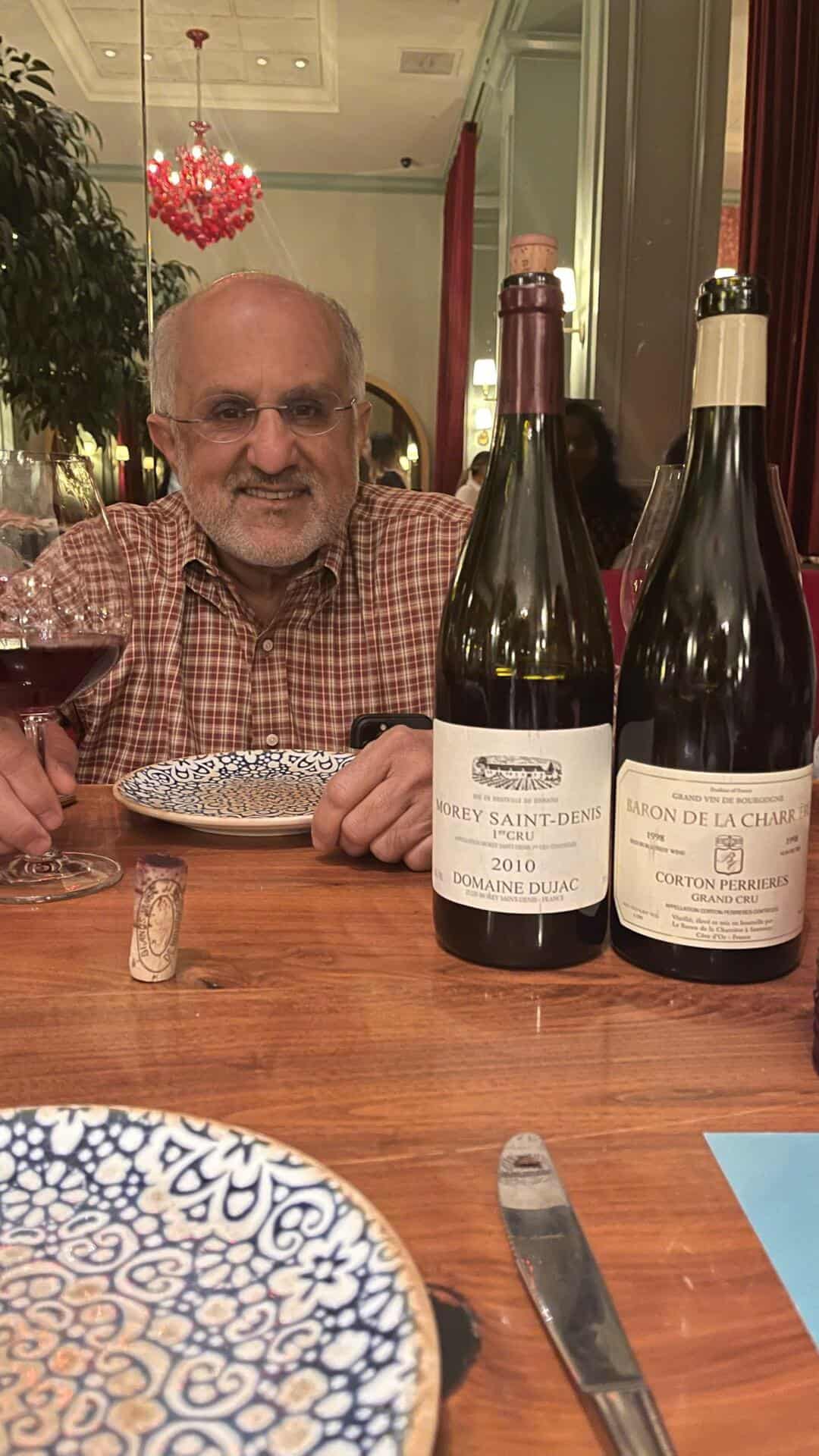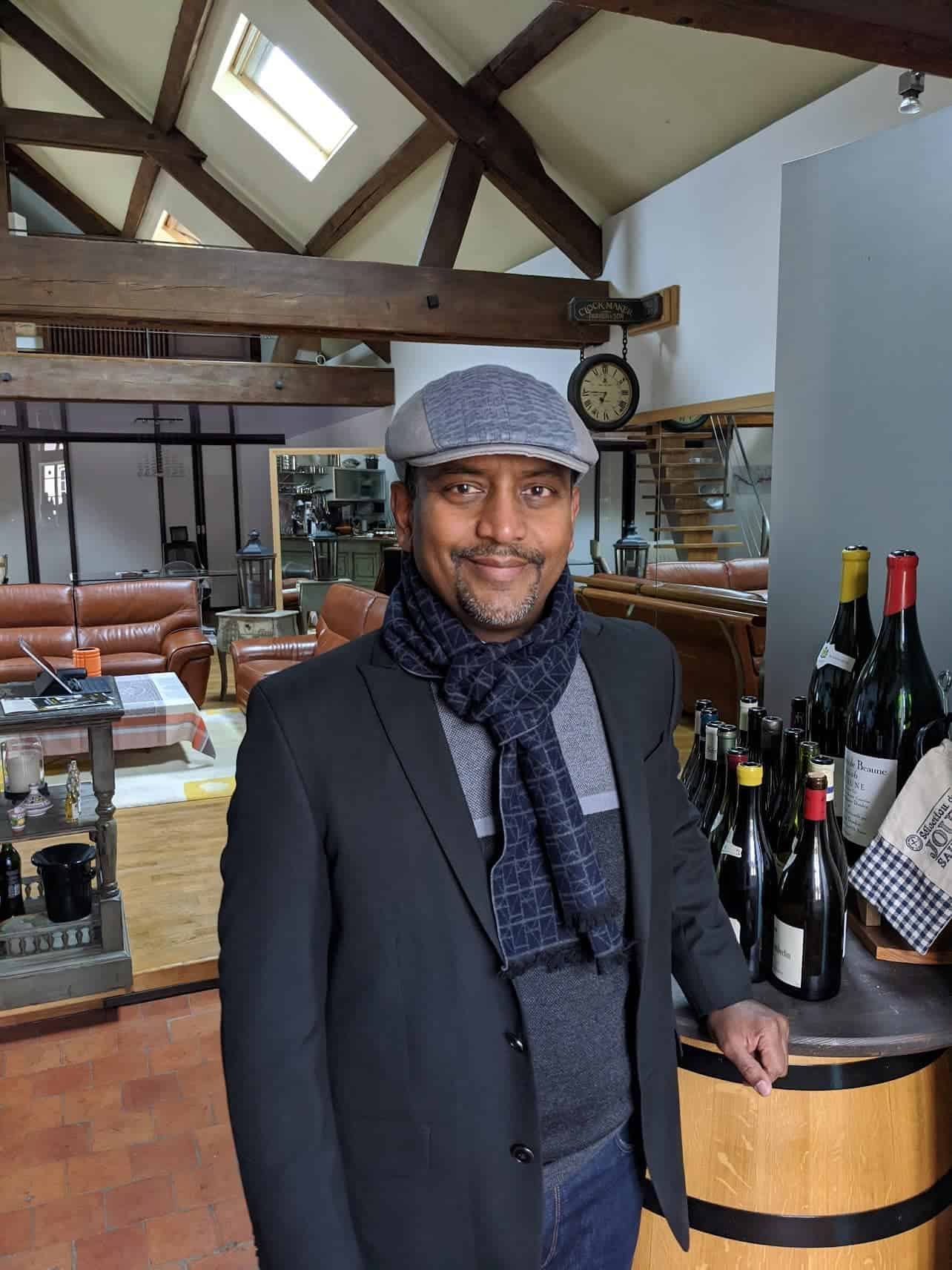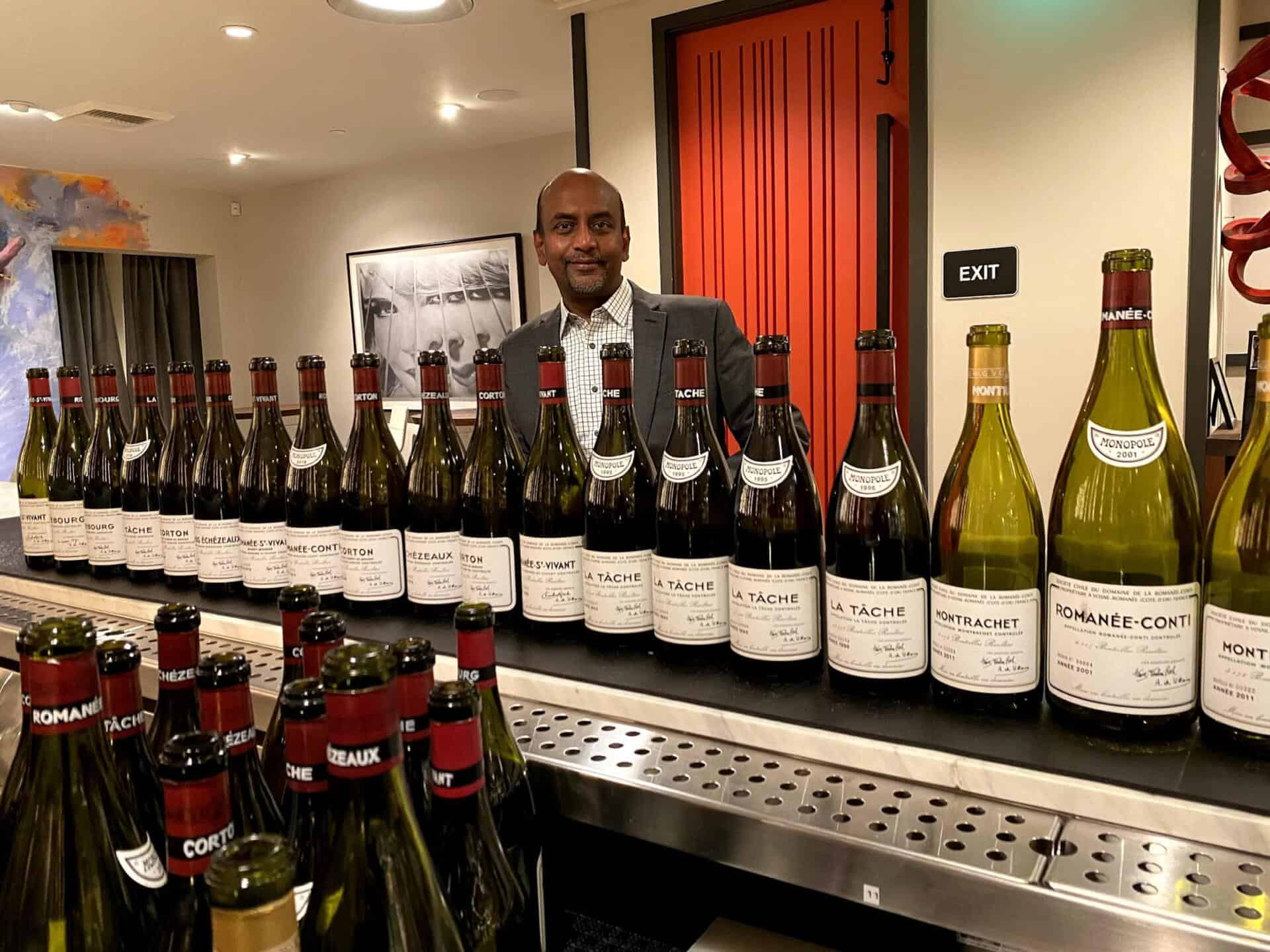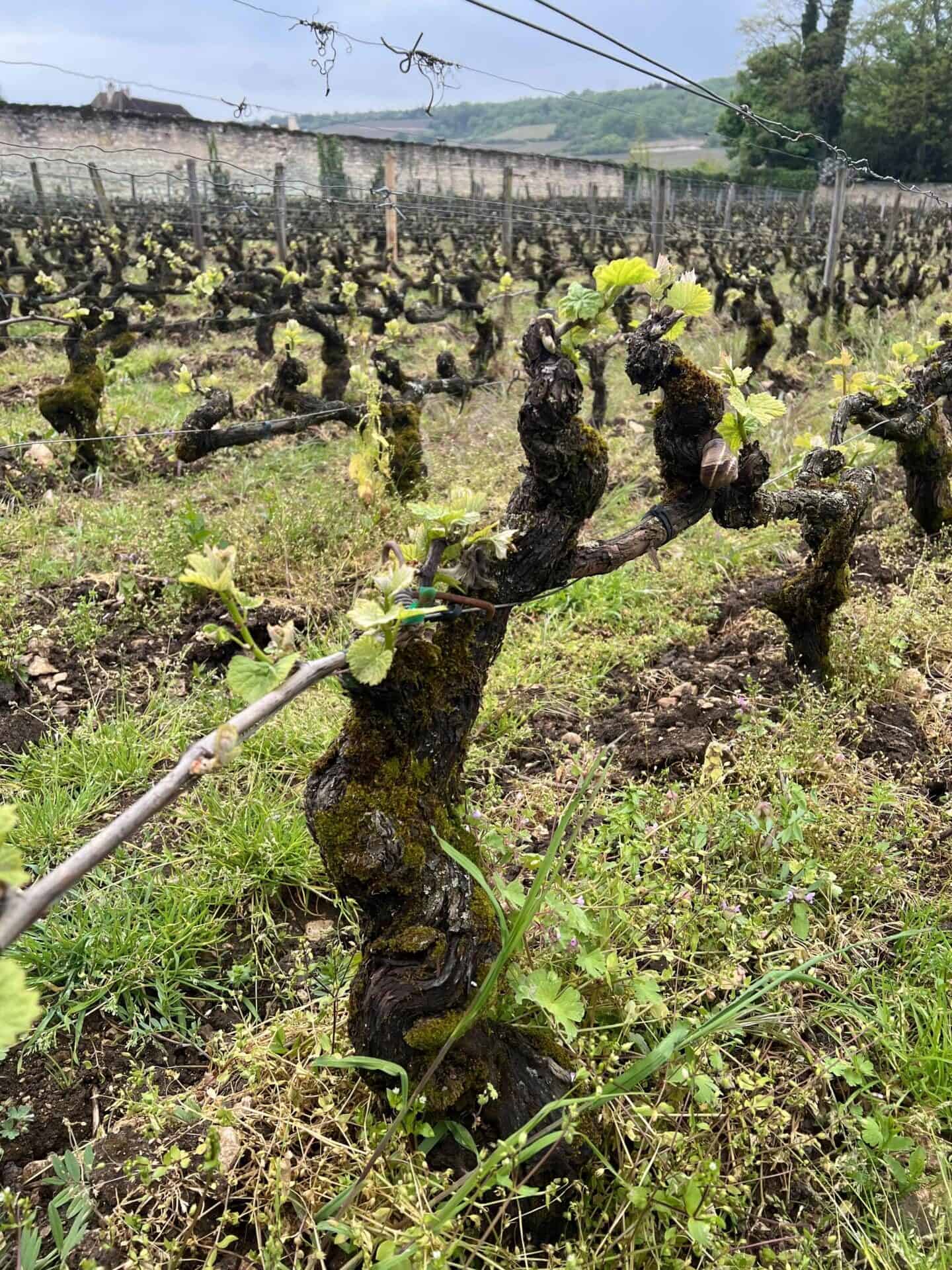About chasing your passion for fine wines and why the Valley is famous for it

Jayaram Bhat is an opera lover, bicyclist, pizza chef, bread maker, and a passionate collector of fine Burgundy wines. He also happens to be an entrepreneur who has built and sold companies in Silicon Valley. Originally from Karnataka, Bhat now lives in Los Altos Hills, California. In his wine cellar are bottles that oenophiles dream of– celebrated names from Domaine de la Romanee Conti (DRC), La Tache, Dujac, Rousseau, Roumier, Fourrier, Arlaud, Coche-Dury, Roulot, Pierr-Yves Colin Morey, and Maume to name a few. He has over 5000 bottles at home, he says, belonging to several vintages, some dating back to 1952. Did I mention that Bhat, 67, only buys wines from Burgundy, the most expensive region in France and therefore the world? Jayaram Bhat is self-confessedly a Burgundy wine geek. “I do buy a few sweet wines from Alsace and Austria,” he allows.
If you tell wine-loving Indian collectors that you are going to Burgundy, there is usually one response: “Drink a DRC 1961 for me.
DRC or Domaine de la Romanee Conti is the most storied among all the Burgundy vineyards, a tiny patch in the Vosne-Romanee region. In this 9.43 hectare vineyard (23 acres) grow the most expensive grapes in the world, broken by soil, slope of mountain, and sun into seven parcels. Average prices of DRC’s seven labels, according to wine-searcher.com are as follows, and these are per-bottle price, not per case, just in case you were wondering. Montrachet ($8600), Echezeaux ($2500), Grand Echezeaux ($2800), Romanee St.Vivant ($3000), Richebourg ($3600), La Tache ($5000), and the crown jewel, Domaine de la Romanee Conti ($21,000).
All this is assuming you can lay your hands on these bottles, most of which have been snapped up “en primeur” by collectors all over the world. Buying “en primeur” means buying the vintage while the wine is still in barrels– before bottling. Technically, much like in the futures market, this means that you are taking a risky bet on their future quality, but with wines like these, buyers are happy to snap them up. But then, buyers don’t really call the shots in the top Burgundy and Bordeaux vineyards. If you want to buy a case (they don’t even bother replying if you want to buy a bottle), you have to apply for an “allocation.” If approved, you get on their waiting list and then beg and plead periodically to see if your name can inch forward. Those lucky buyers who claimed allocations in the late 90s when Burgundy wines were still affordable are laughing their way to the bank. Prices of the bottles they own have tripled and quadrupled, handily beating the stock market. Not that the true wine collector will even dream of selling his Burgundy wines.
Why do people get into wine? When I asked these collectors, their answers echoed the reasons cited by many. Wine is a combination of history (the Romans planted wines in most European countries), geography (terroir is essentially about how the land influences the wine), geology (how limestone, chalk and soil influence the flavours of the wine), people (the winemakers), chemistry (the fermentation process, the sulphites that you need to add, the barrels that you need to use), all resulting in a product that the ancient Greeks and Romans attributed to the God who was a giver of ecstasy: Bacchus and Dionysius. For me, and both Tamanna and Bhat echoed this, the allure of wine is to figure out whether I can memorize aromas. We live in such a visual culture. The fact that some people can smell a wine and say that it is from Volnay, name the year of the wine’s production: 1988, and the producer: LaFarge, as Rajat Parr routinely does is a feat. I aspire to emulate it, hence the search for the scent-memory.
That said, in order to pursue wine seriously you need two things that are in short supply for most folks: time and money. Collecting Burgundy wine is not for the faint of heart or wallet. Most of these collectors tend to be men, at least for now. Today’s more and more women are winemakers, and perhaps soon, more and more women will become wine collectors.
The winning taste
Krishna Tamanna, 57, is one such collector. Originally from Hyderabad, he too lives in the Valley now. He works for a technology company, invests in a few restaurants, plays golf and loves music. But his greatest passion is wine. He stores 1000 bottles at home. His remaining wine is in a storage facility in Napa. “After 4000 bottles (over there), I stopped counting,” he laughs. What does he buy? Largely Burgundy wines, the big names of course– DRC, Armand Rousseau, Dujac– but also some up and coming producers who are making exceptional wines. Unlike Bhat, Tamanna’s collections also includes other old world wines from Italy, Spain and Germany.
There is a culture in Silicon Valley that is unique to America and perhaps the world. It is a culture, not so much about consumption, although that does happen, but about passion. Successful entrepreneurs in the Valley are different from the ones in, say, New York. Here, men– and these are mostly men– get into stuff in a deep way, whether it is mountain-biking, bread-making, collecting art or wine. They read, study, travel and practice their interest. They do sadhana in that old “riyaaz” way– where Indian musicians wake up at dawn to practice the same phrase, raga or song. They become experts.
Tamanna is typical of this. Once he drank his first bottle, a 1994 Chianti, he got so interested in wines that he spent three weeks in Europe, then enrolled in a WSET (Wine and Spirit Education Trust) diploma course. It was hard because he was working full-time, had young children, and had to drive every weekend to Napa to take classes all day. Thankfully, his wife was supportive of his passion.
Today, he owns an apartment at Beaune– the center of Burgundy– and sponsors a wine and music festival that happens there in late June. Family occasions like his son’s upcoming birthday, involve planning what wine to open. This year, he is thinking of a Salon champagne and 1996 vintage wines– the year his son was born. He still remembers the 1906 Margaux he tasted in New York. The oldest wine he has drunk is an 1894 Madeira.
“Passionate wine drinkers are always chasing that experience that got them hooked,” Tamanna says. “We are on a quest to chase that singular moment out of many such moments that delivers that same pleasure. (We are chasing) a memory that makes us continue on this journey, on this quest.”
For Bhat, the wine that started him on the journey was a La Tache that he drank in 2001. He still remembers the aromas and flavours of the wine that got him hooked. Since then, he has become what friends call a “Burgundy evangelist.” He started a Burgundy wine tasting group that meets every week or so, for a blind tasting. The group consists of the same six people– Tamanna is part of the group.
The format too is specific and repetitive. “One person provides all the wines for each meeting and we cycle through everyone in turn,” says Bhat. “As an example, Krishna would provide wine in week 1, then I would provide wine in week 2 and so on. We would cycle through all six and then back to Krishna. Wines are served blind and we have to guess the village, vineyards, producer, and vintage. There are points awarded for correct guesses. But this is just for bragging rights! We usually don’t invite anyone else as we are all Burgundy geeks with deep cellars. Tastings are usually held at one of our houses and we order food from a local restaurant. Someone pays for all the food for each dinner and it goes around in a round-robin fashion. There are no other payments or sharing involved.”
A delivery of bragging rights
Wine clubs abound all over the world. Tamanna is part of two clubs– one with Bhat and another, more formal one that he was introduced to by an Iranian-American friend of his. A large one in the West is the Confrerie des Chevaliers du Tastevin, one of those elite wine institutions that everyone likes to gripe about and secretly want to belong in. Founded in 1934, and headquartered in the venerable Chateau Clos de Vougeot, their stated goal is to “defend the reputation of France’s great wines in general and those of Burgundy in particular.”
There are also wine forums ranging from small Whatsapp groups to giant online communities like “ebob” which was run by Robert Parker, the wine critic, which has now been dissolved. Today, Wine Berserkers, describes itself as the “largest and most active” online wine community.
Much like in any community, wine too can be competitive. In my birding groups, there are those who have seen the most number of species. In wine, there are those who have tasted legendary wines and vintages. We all collect bragging rights and this happens here in every wine Whatsapp group as well. All of this gets amplified on Wine Berserkers, the online group. There are the face-offs and show-offs as well, referred to as the “ballers”. A recent article in Vinography, a popular blog, describes a French man with an amazing collection of old wines who opens them for a price and hosts dinners all over France for those who can pay for the privilege of sampling his wines. He is admired and scorned, often in the same thread.
The man in question is a retired CEO of a French steel company. Francois Auduose, whose Internet presence is benign and whose tasting notes are, shall we say, enthusiastic, has amassed a collection of old wines– bottled in Napolean’s time and prior. He is known for holding wine dinners in France where old and grand wines are poured for a fee. Bhat has attended a few of those dinners and says that it costs “$2000 to 5000 per person and sometimes more” depending on the wines. Some of the wines Bhat tasted include a 1929 Château Bouscaut, 1959 Le Corton Grand Cru, 1970 Yqem, 1967 Petrus, 1983 La Tache and so on. For Bhat, drinking these aged wines in the company of wine geeks from around the world is the high.
What is the pull of old wines? And what is the pull of Burgundy? Well, that would take an entire article but let’s just say that the Cistercian monks who inhabited the area used systematic and precise methodologies to collect data on which “climats” or plots of land grew the best vines. This body of knowledge gave Burgundy winemakers a leg up in terms of their winegrowing techniques.
Cut to the early 2000s when the late Becky Wasserman, who the New York Times called the “great sage of Burgundy” showed up at Burgundy and began promoting its wines in the US and UK. Within a few years, the prices of Burgundy wines began to rise and they have not stopped since. In fact, today’s winemakers, such as Alec Seysses of Domaine Dujac wonder about the “golden years” of Burgundy– whether the region can still continue on its trajectory. Which begs the delicious question: which region in the world will become the next Burgundy? Will it be Piedmont in Italy where Giacomo Conterno is called the DRC of Italy or Rioja in Spain? But that too, is for another article.
Where attraction lies
What is clear is that Burgundy is an expensive passion. There are other collectors like Bhat and Tamanna in the Valley. Arvind Sodhani is one who is publicly listed in the Festival of Music and Wine (fomv.org) as one of the board of directors. The Chairman, by the way, is Auburt de Villaine who ran DRC for decades. Sodhani runs his own vineyard– Sodhani vineyards in St. Helena, Napa but clearly has a link to Burgundy. Others spoke to me but wanted anonymity. “Burgundy is an expensive hobby,” said one. “Thankfully, my kids are through college and I can engage with this.”
The curious thing was that all these Burgundy wine-lovers had similar takeaways or advice for those embarking on this journey.
“Be true to yourself and your palate,” says Tamanna. “Don’t try to like something somebody else told you to like. Trust your palate, know that it will evolve.”
To Tamanna, palate memory (remembering the taste of a wine) and olfactory memory (remembering the aromas of a wine) are key. Some are more natural at it than others and women are better at it than others. But he says, “You can definitely cultivate your palate and your olfactory senses too.”
When I ask Bhat for tips for aspiring wine-geeks, he reels off a list: visit the local wine store, join a tasting group, wine bulletin boards and Facebook groups, read community tasting notes at Cellar Tracker, subscribe to wine newsletters like burghound.com, buy and taste as much wine as you can afford and compare your tasting notes with others.
So what’s the future? Gender for one thing. Currently, the world of fine wines is almost exclusively inhabited by men. So where are the women? India has Sonal Holland who passed the tough Master of Wine exam. Tamanna has some good news for me too. During our conversation, he said that an Indian woman whose name he couldn’t remember was the youngest person ever to pass the very tough Master Sommelier exam. She passed it at age 21, he said, and marvelled at how she cultivated her palate and olfactory memory at such a young age.
I looked her up. It was indeed an Indian woman who was the youngest Master Sommelier in the world. In the wake of the sexual scandals that rocked the Sommelier fraternity, she gave up her title.
Her name: Alpana Singh.
So what are we to do, sitting here in India? I think a trip to Bourgogne (as a first step, maybe we should pronounce it like the French do instead of saying Burgundy?) makes a lot of sense if you like these wines. Travelling here, like I did recently, shows you the geographies or the climats as the French would have it. It helps you visualise the producers and the wines. And it teaches you that all these fabled wineries are at the end of the day, family-run businesses that cultivate expensive farmlands to produce a liquid that has been imbibed by humans since the dawn of civilisation, or at least the dawn of Roman civilisation. Oh, and if you are a woman with a palate, cultivate it. Buy wines. Engage with wine-clubs. Visit the wine regions. There is no point complaining about a boy’s club if you are unwilling to do something about it.
END MAIN STORY
Jayaram Bhat's Guide to Burgundy
I recommend staying in Beaune and the best place to stay there, in my opinion, is Hotel La Cep right in the center of town.
As to which winemaker to visit, it depends on what kind of wine you would like to taste. Many winemakers, especially the well known ones, require an introduction from the importer here in the US or elsewhere. You can only get such an introduction from the importer if you buy wine regularly from a retailer who buys from that importer. However some of the up and coming winemakers are easier to get an appointment with by reaching out to them directly. However, as you drive on D974 from Dijon to Puligny Montrachet, some smaller winemakers will have signs inviting you in for wine tasting or “degustation.”
Some winemakers I’d suggest visiting:
- Domaine Dujac
- Domaine Fourrier
- Domaine Pacalet
- Taupenot-Merme
- Hudelot-Noellat
- Heitz-Lochardet
- Bouchard (Large winemaker)
- Domaine Joseph Drouhin (Large winemaker)
- Bruno Clavelier
- Bitouzet-Prieur
- Bernard Moreau
- Hermand-Geoffrey
You will have to reach out to them individually.
Another option is Sue Boxell, an Englishwoman and a fellow Burgundy geek who lives in Burgundy and runs a tour operation focusing on food and wine.https://www.burgundyonaplate.com
Restaurants in the area also have amazing wine lists at bargain prices. Sometimes, I would just go to these places to enjoy wine from their lists.
My restaurant recommendations:
- Gevrey Chambertin: Che Guy
- Chambolle Musigny: Milliseme
- Beaune: Loiseu des vins, La Caveau des Arches, Ma Cuisine, Caves de Madeline, Jardin des Remparts, and a Japanese restaurant with great wine list – Bissou.
- Puligny Montrachet: Le Montrachet which has an amazing wine list at bargain prices.
Any serious wine lover needs to get to Burgundy at some point. The only question is when.






















Leave A Comment